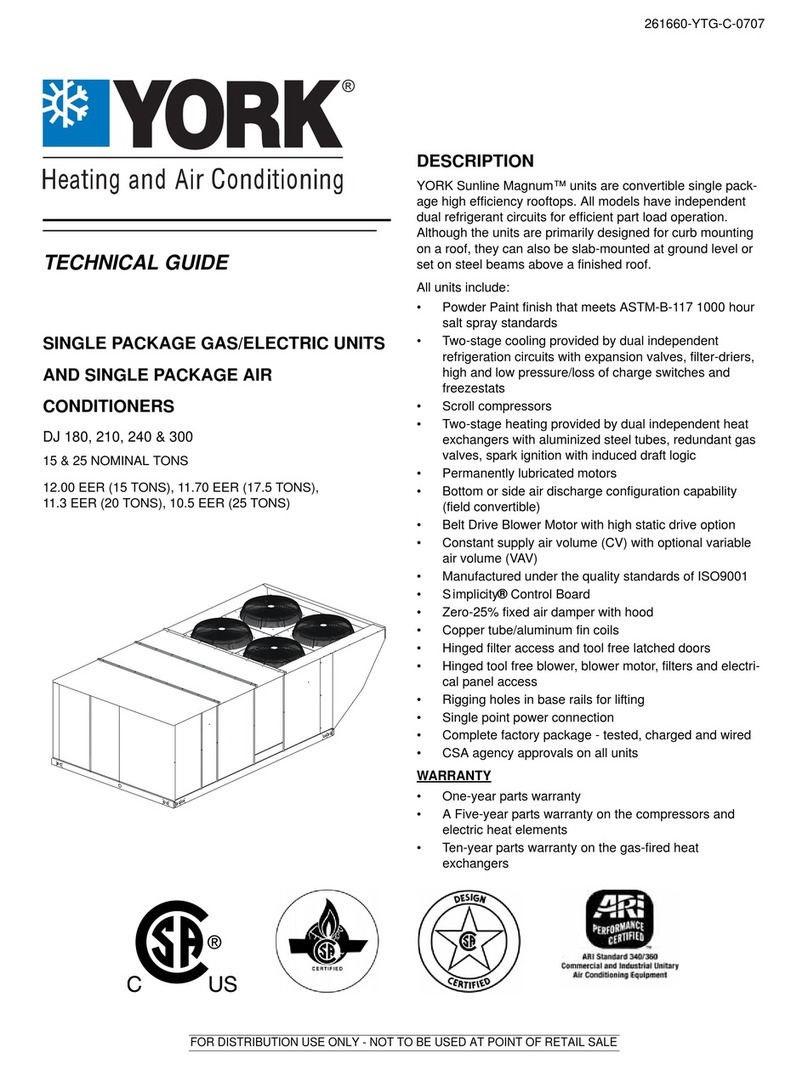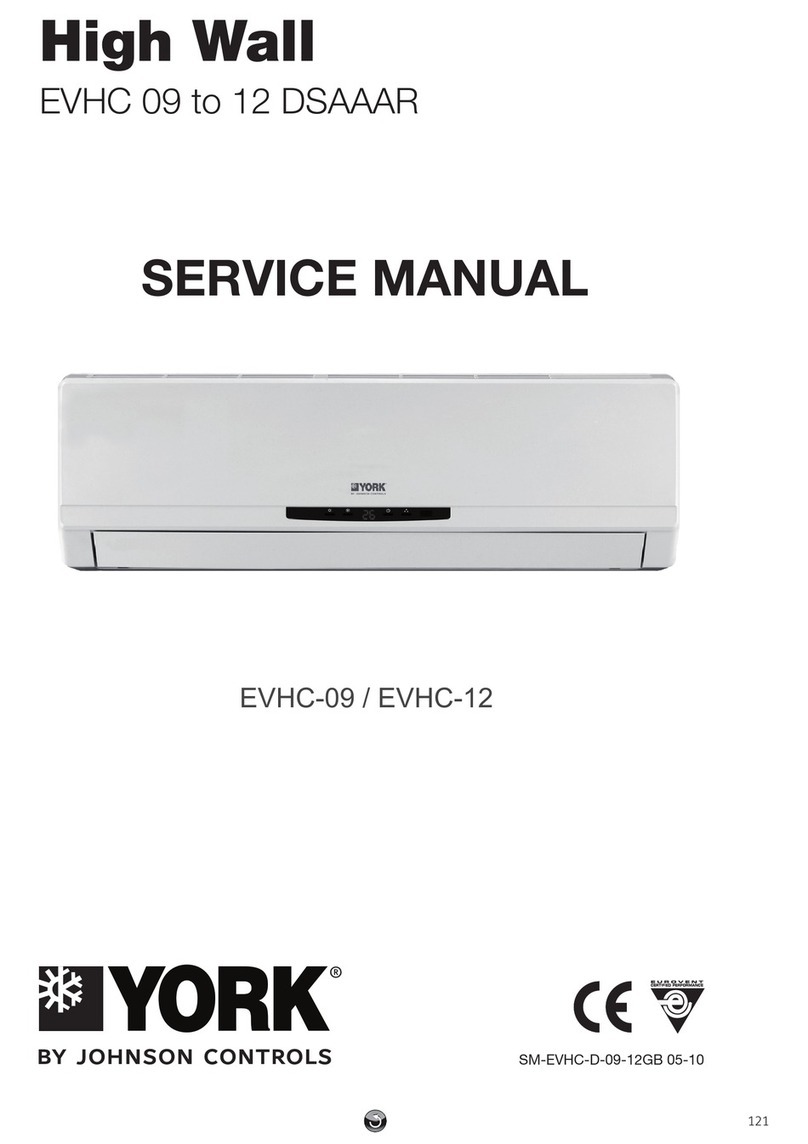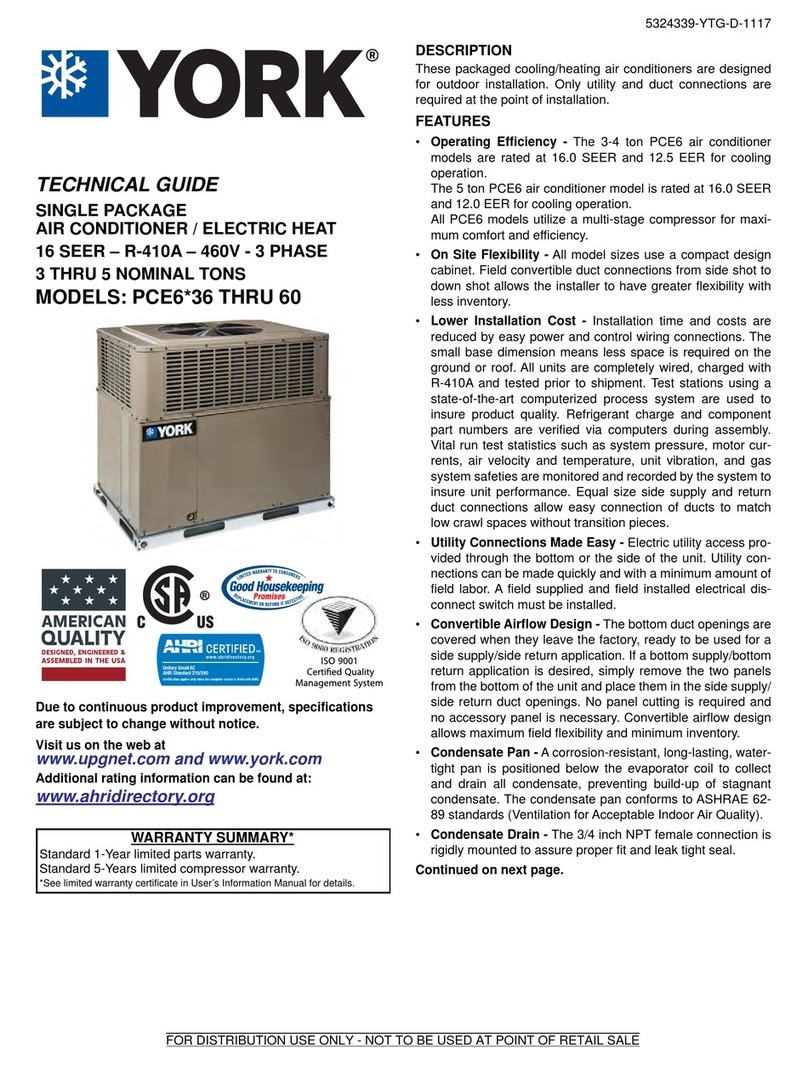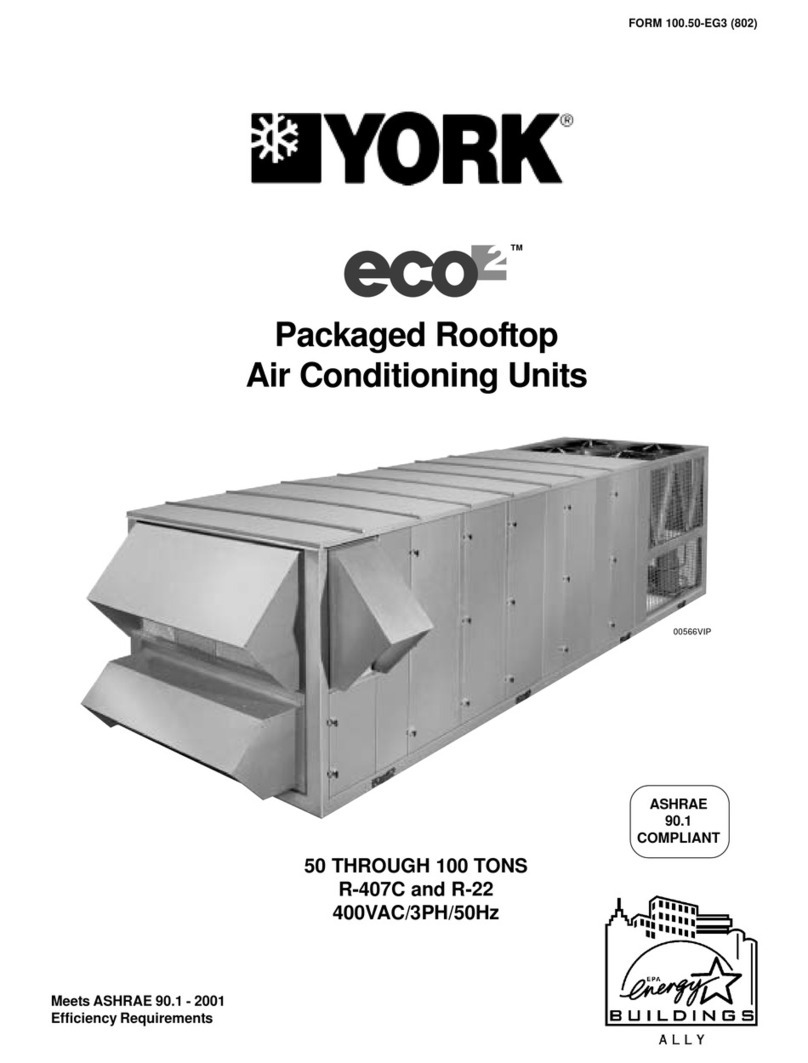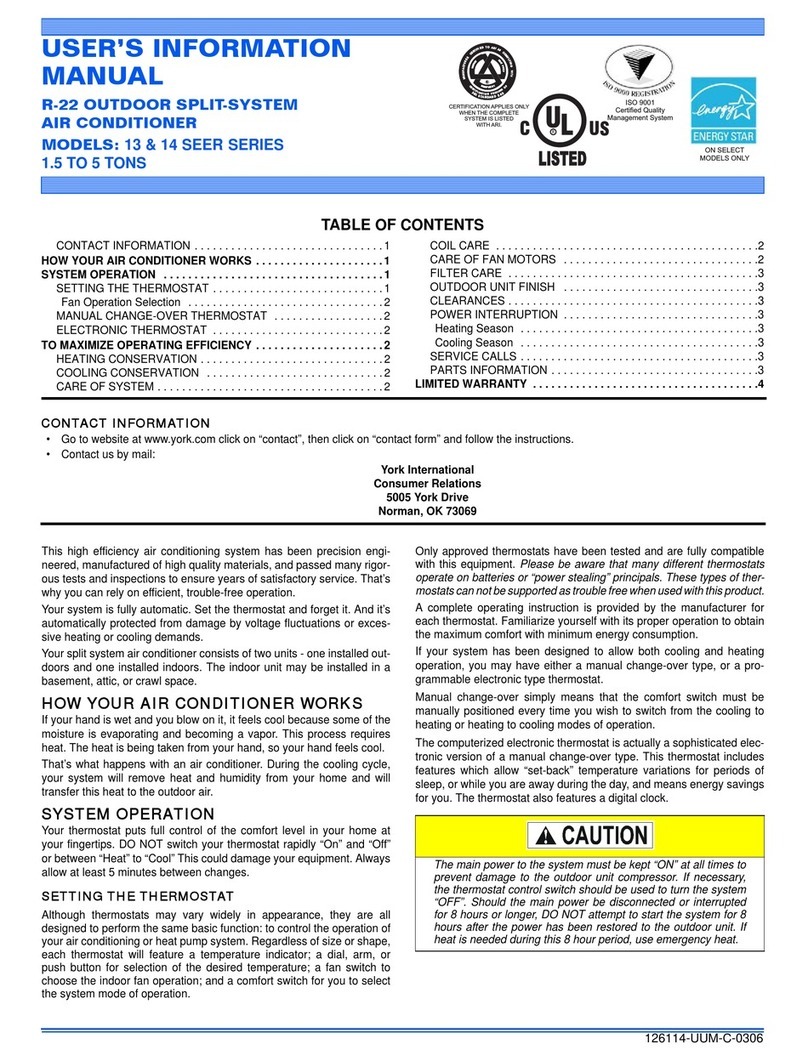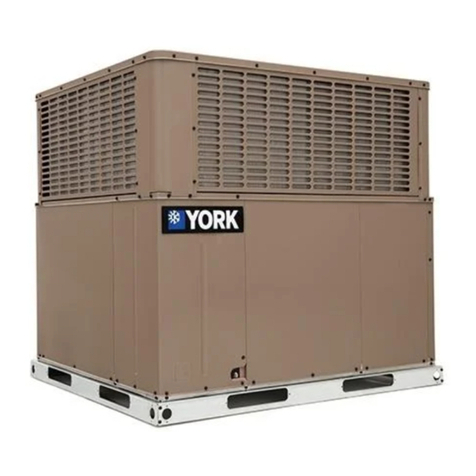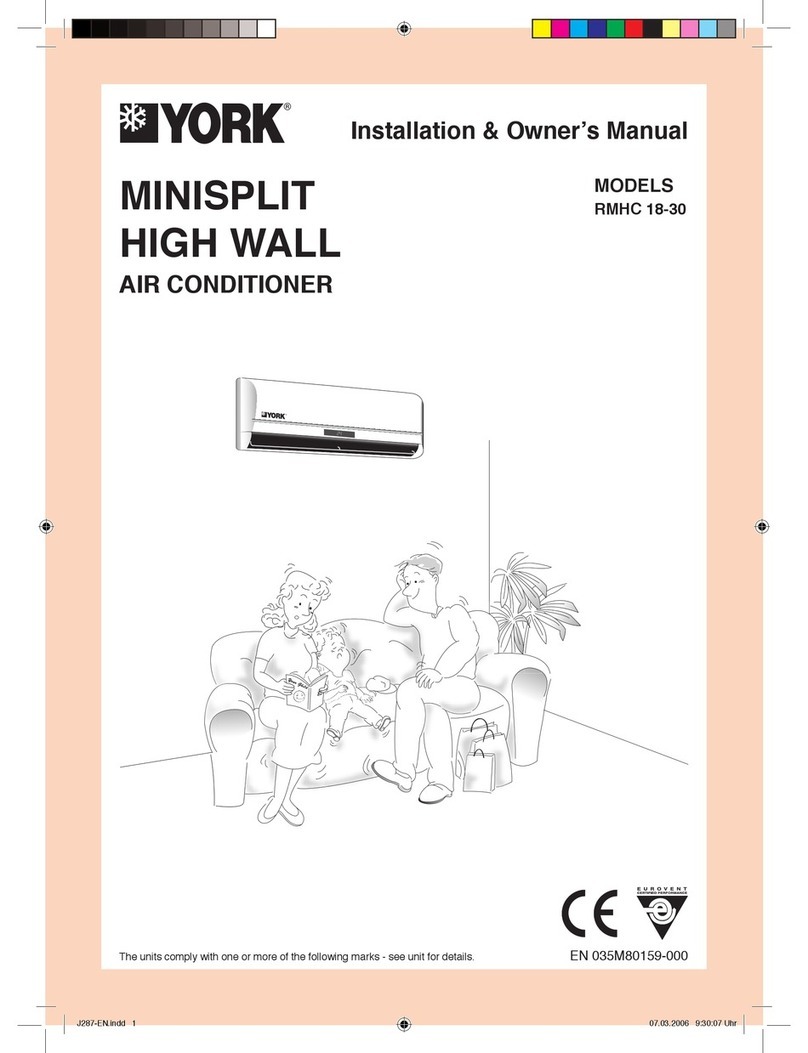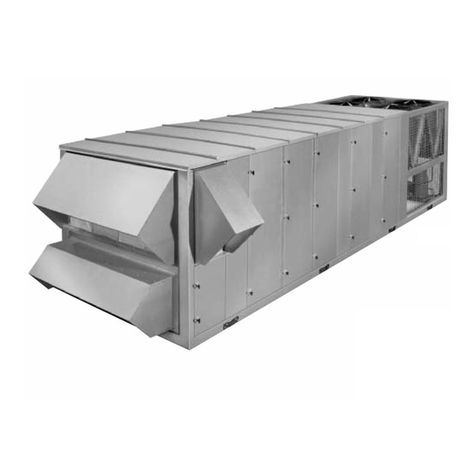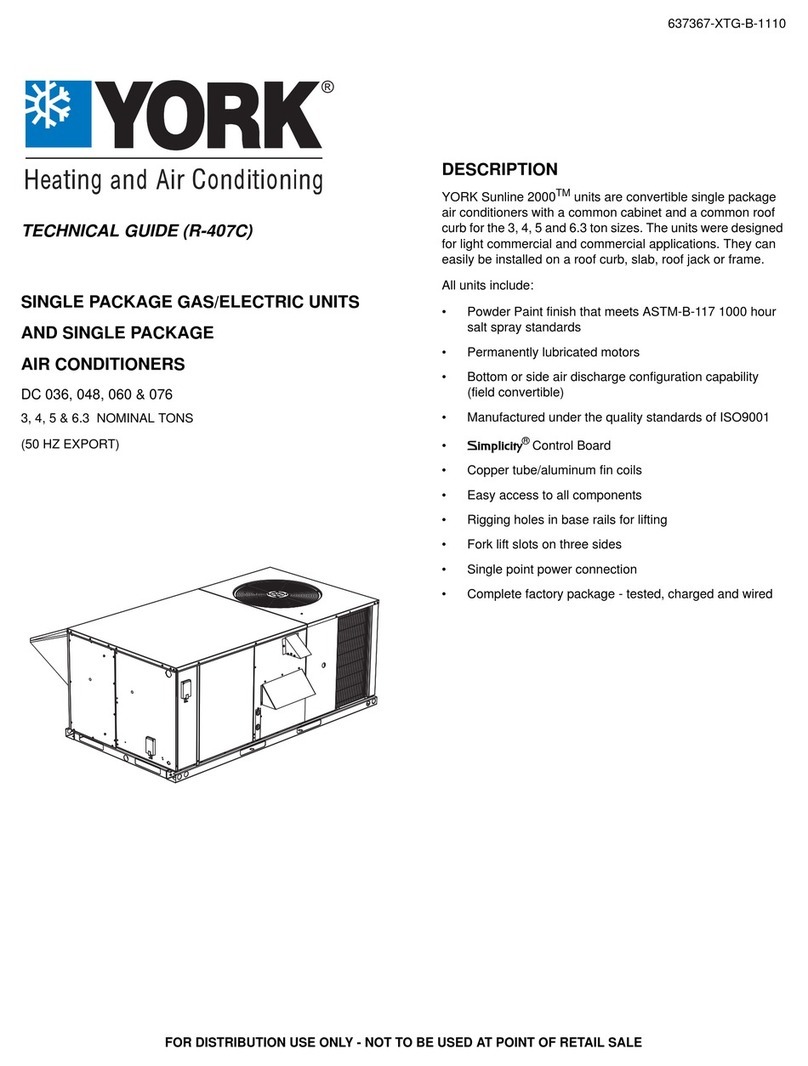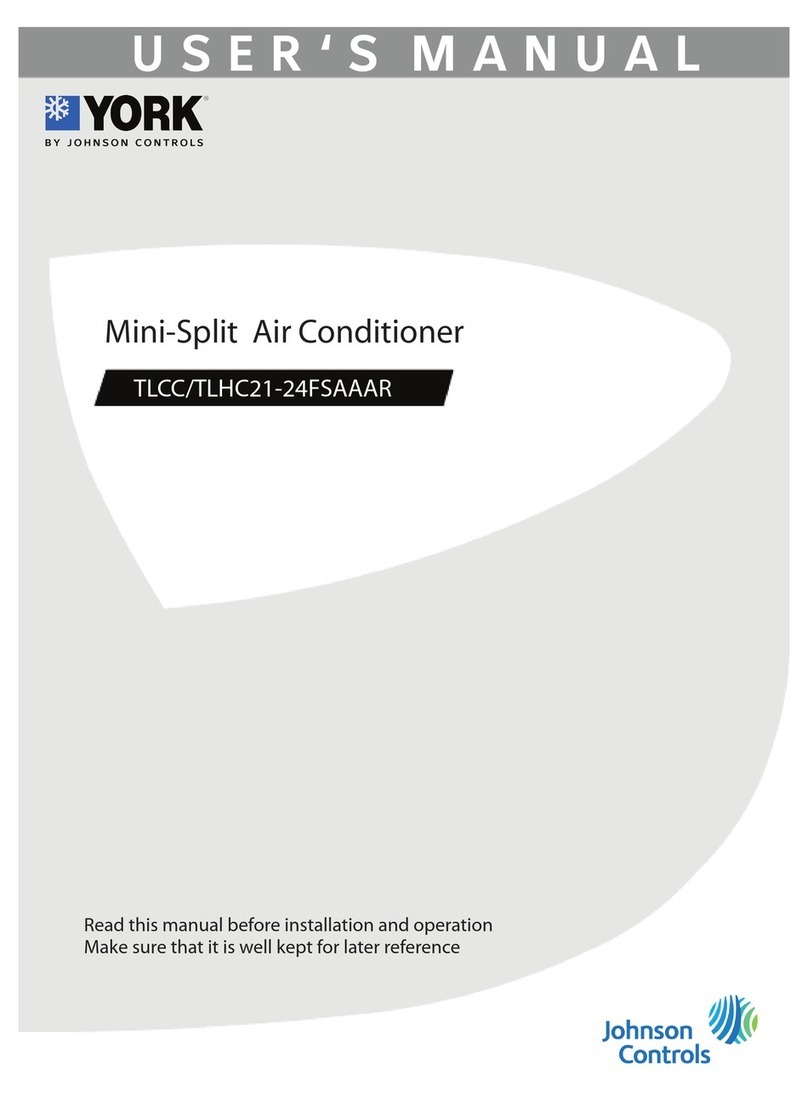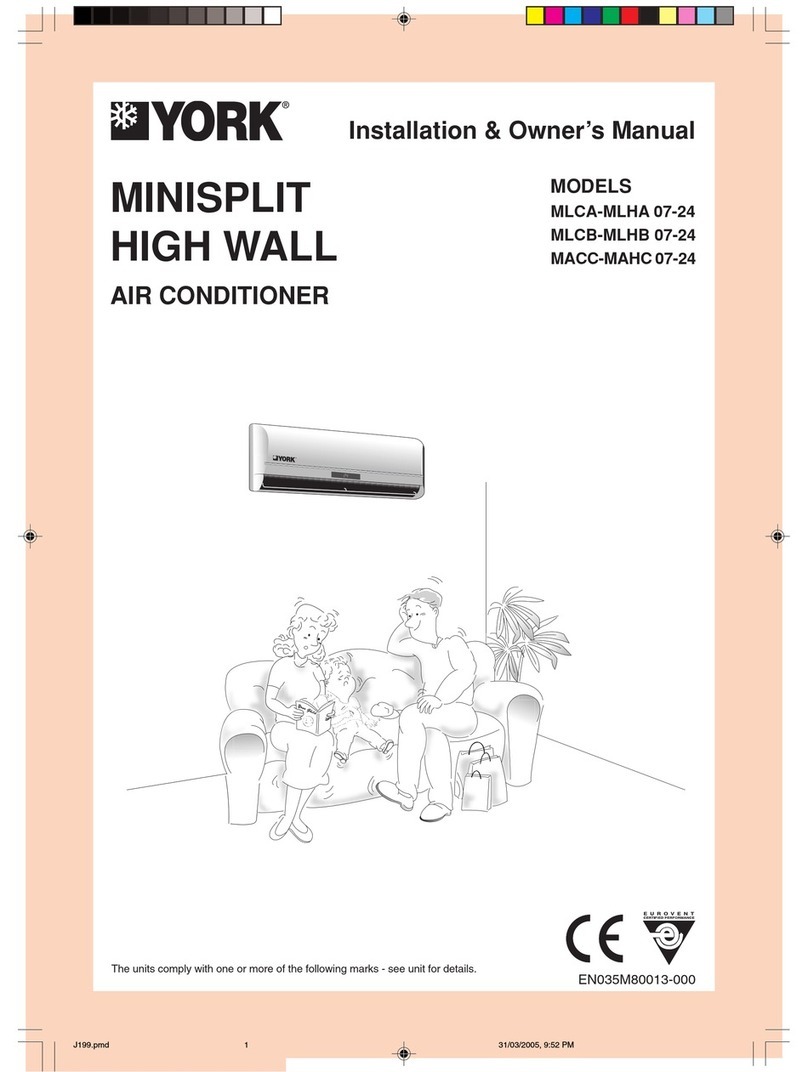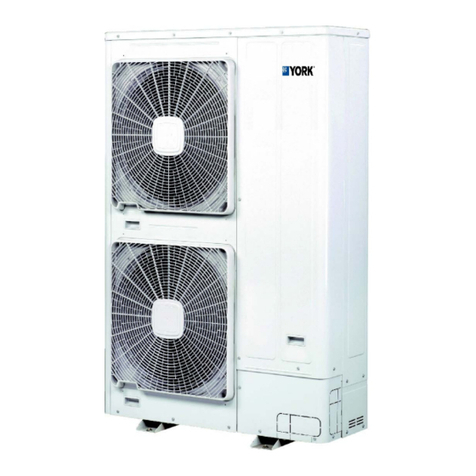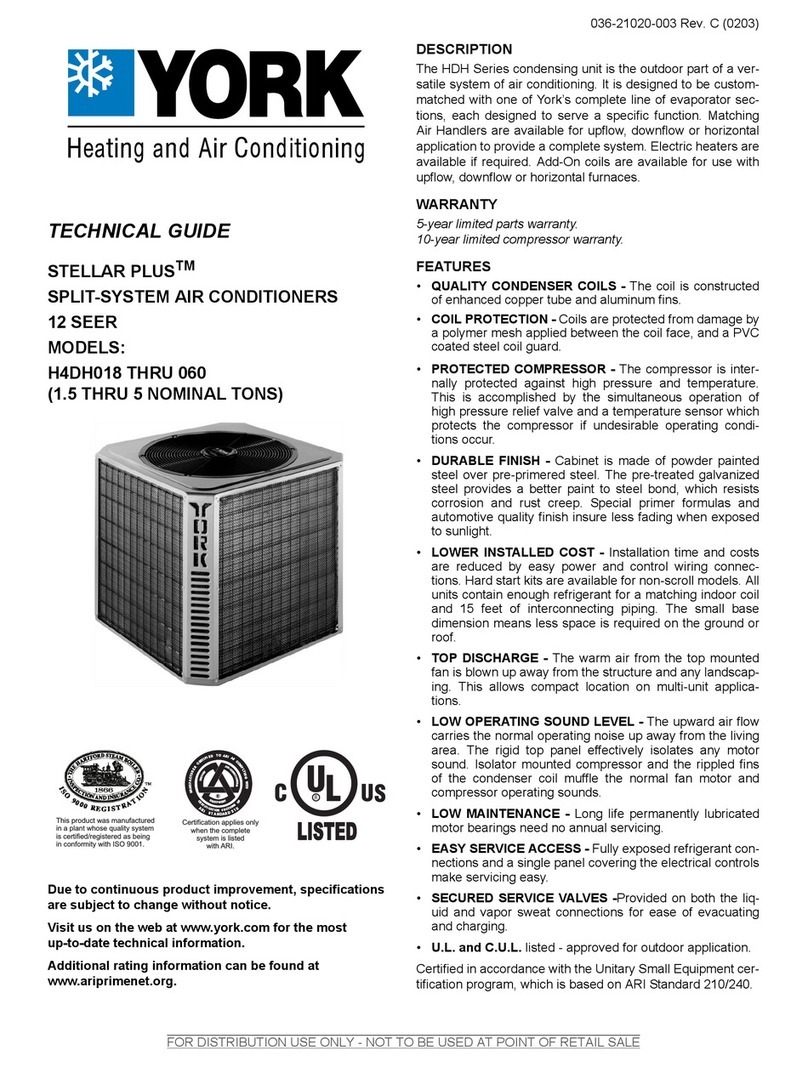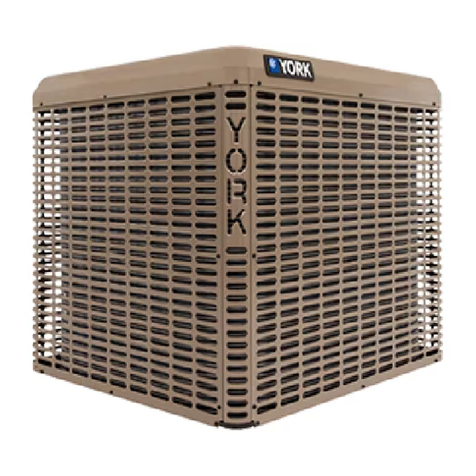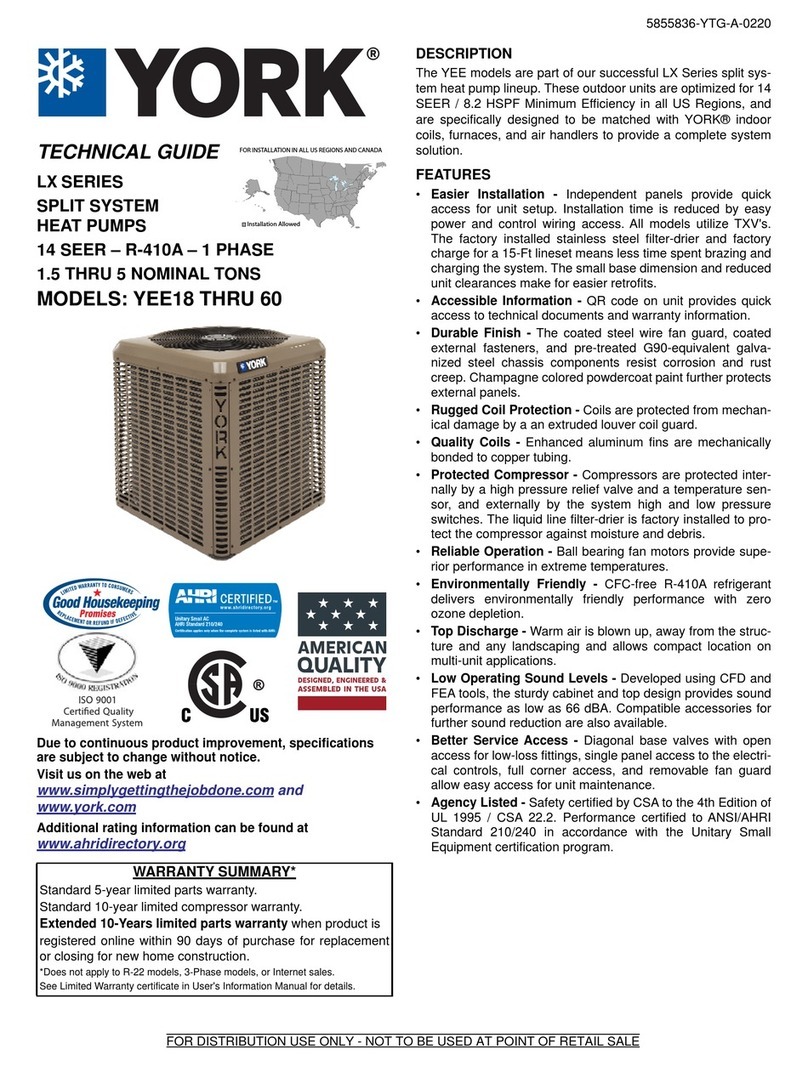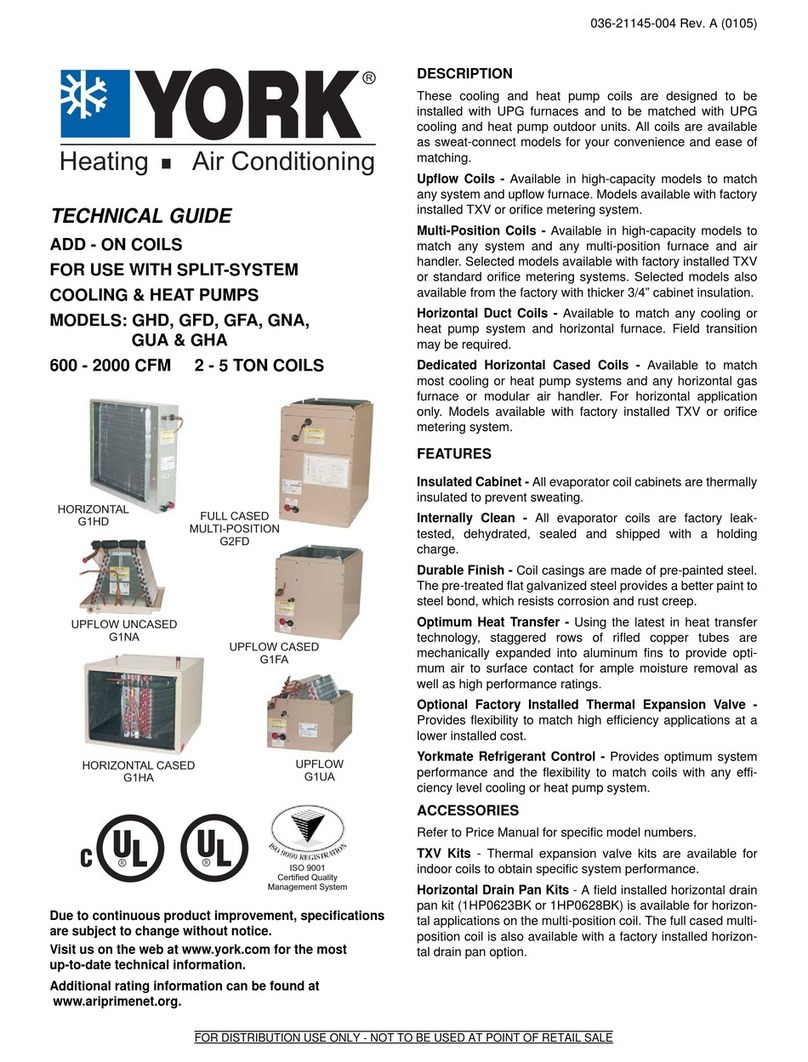530 25-N2
TABLE OF CONTENTS
GI:NERAL 1
INSPECTION I
REF1REN(’I 1
NOMIN(’LAT(IRL INSTALLATION 2
L[ MIT ATIOXS 3
RI(;GINC; 3
kloliNTING .3
(’L1;ARAN(’tS.3
coNDLNsATI.DRAlk”CONN1(TION 4
POWLR AND (’ONTKOLW[RING
Powc[ Wll Ing 4
(’ontfol Wiring .,, .,, 6
r)~l(”_f COP4SL(’ rloNS 11
f-lLT1KS 11
1(’ONO\llZf RRAIN’H6fi)~’bPTiOiV’:: ::: 12
FIXEDOUTDOOR AIRRAINHOOD : 12
IXliAUST AIR RAIN HOODOPTION ., ]~
STATICPRESSUREREGULATOR AND CONT”ROL: 12
OPERATION
DISV VARIABLEAIR VOLUME ., 12
GENERAL . . . . 12
COOLING ., .’: : : : : 13
Economizer System, ., . . 14
Damper LinkageAdjustment, ., ., 14
Hwrtmg Systcm 14
Au Volume Control System 14
Check]ngLlnk~geon Alr Volume D~m”pers 15
Checkout Procedure 15
Exhaust Alr System 15
SUPPLYAlRBLOWERADJUSTM1+T : : 16
MASTLRPRINTLDCIRCLIITBOARDAND
PLUC;-INRELAY ASSEMBLY 18
SE.f<VICE.ANALYZt R18
FIXEDOUTDOORAIR ADJUSTMENT :19
t:XllAUST AIR PI RFORMAN(’L 19
START-UP
PRE START-UPCHECKS -)’-!
. .
pre-stsrt Steps and procedures 7-J
--
INITIALSTART-UPCHECKS 23
SAFETYAND SERVICE FEATUkES .23
MAINTENANCE
FILTERS ., . . . ... , . . . . . . . . ... . 24
COILS ..................... ., 24
DRAINPAN .24
LUBRICATION. . . . . . . . . . . . . . . . . . . . . . . . 24
BELTS . . . . . . 24
REFRIGERANT CtlARGE R-22 24
FIGURE
I
>
<
4
5
6
7
8
9
10
11
12
13
14
15
16
17
18
][]
TABLE
1
7
3
4
5
6
7
8
9
10
11
LIST OF ILLUSTRATIONS
Un It Le;$ P;incls ~
r~pIcdlUn] tRlgg(ng 3
(’enter (JI Gr~v]ly 3
lk~omn]cndcd Drain P]prrrg 4
Bottom Power Wrrlngl.ntran~e 5
Side PuwerWlrlnglmtrancc 5
Control Wumg Entrance (DSV300,”360) ~:6
Control WlrmgEntrance (DSV480) 6
Control Wrrmgand Static Pressure Con-
nect inns, D1SV Un]t With A]r Volume
Dampers 7
Un]t l)lnlcrr~lons . . . . 10
Duct Conncctlons . . . . 11
Sound Ahsorptlon Chamber .11
Internsl V[ewof DamperMotor EndSwltcb :1s
AdjustingDamper Motor End Switch 15
Typical Motor Mountlrrg Assembly 16
IIole Locations For Supply Alr (’FM(’beck 17
PressureDrop Acruss IIvapordtor (’oil 17
I;rxcd Outdoor Alr AdJir\tnlcnt 19
l;xhaus[ ArrPert orlmince 19
LIST OF TABLES
Appllcti[lon lli[a 4
Cunlponcnl Wcight~ 4
Llcctrlcdl Dtita .8
I-rltcr Kcqulrcrnentj 11
Ambient Thernmstat %ttlng 14
En[halpy (’ontroi (%[ Ilrlnt “B’ . . 14
Supply ArrSystem Adjustment 16
ScrvrceAnaly/cr Function Chart 18
BlowerMotor And Drlvc Da[ir 20
Rc\rsttsr]cc\-Untt Options ~nd Atxc\sorm~ 20
Supply Alr BlowerPcrlormancc 21
PRODUCT IDENTIFIER -
SV =VAV Sunllne
I
ink-l
J
COOLING
CAPACITY
300 =25 Tori
360 =30 Ton
480 =40 Ton
FACTORY INSTALLED HEAT
E=Electric
G=Gas (Multl-Fuel)
A=Not Applicable
I
I,=
‘aEa
NOMINAL HEATING CAPACITY
Gas Electric
400 =400 Mbh 040 =40 KW
560 =560 Mbh 060 =60 KW
800 =800 Mbh 080 =80 KW
100 =100 KW
120 =120 KW
-
-
-
2con troll EIIVIronmf,llt,i ISyslf,ms
